In this article, we review iFi’s new headphone amplifier, the ZEN CAN 3. It retails for $229 USD
Disclaimer: iFi provided the Zen Can 3 for this review at no cost. As always, the article reflects my unbiased opinion.
iFi Audio
I first discovered iFi Audio back in 2013, a year after their market debut in 2012, when they introduced the iDSD series. It was a game-changer at a time when powerful, portable DAC/AMPs were rare. Since then, iFi has expanded not only its product range but also its presence, establishing a vast distribution network worldwide. They are now known for their diverse product portfolio, including desktop and portable DAC/AMPs, enhancers, Bluetooth gear, and more. iFi states that they utilize high-quality components sourced from Germany, USA, and Japan.
The Zen Can 3 is a class A headphone amplifier and iFi’s latest addition to its well-known ZEN series. The ZEN CAN 3 features multiple, completely analog and DSP-free modes, and is able to provide up to 2000mW of power while occupying a small space on your desk.
It is naturally the perfect companion to the Zen Dac 3 we reviewed a while ago, integrating iFi’s well-known technologies like XBass+ and XSpace, which have been perfected through years of research and development, allowing a degree of sound customization without EQ or DSP.
Over the years, we have reviewed and awarded a lot of iFi equipment on Headfonia. You can access those reviews through this link: Headfonia iFi Reviews.
iFi ZEN CAN 3 Class A Desktop Headphone Amplifier
The ZEN CAN 3 is iFi’s 2024 update to the ZEN CAN series. Priced at $229, this dedicated desktop amplifier features a similar Class A circuitry iFi designed for the flagship iCAN Phantom. It comes with XBass+, XSpace, Movie, and Game Modes. Unlike digital DSP adjustments, the ZEN CAN 3’s modes are done within analog circuitry, keeping sound manipulation purely analog. The amp is powerful enough for many cans and IEMs on the market, and we’ll also pair it with the ZEN DAC 3 to evaluate it in this review. Without further ado, here are the specs & highlights of the ZEN CAN 3 below.
- Discrete Class-A Amplifier Circuitry
- Movie and Gaming analog EQ modes
- XBass+ and XSpace Analogue Signal Processing Modes
- Optimized for xMEMS driver amplification
- Output RMS 4.4mm BAL: >11.5V/2000mW @64Ω
- Output MAX 4.4mm BAL: >15.1V/385mW @600Ω | >6.2V/1200mW @32Ω
- Output Impedance: <200Ω
- Balanced HPO Output Impedance <2Ω
- SE HPO Output Impedance <1Ω
- Output Level: 4Vrms (0dB 200kΩ load)
- SNR: ≥125dB (7.3V 4.4mm Input 0dB @200kΩ)
- DNR: ≥119dB(A)
- THD+N: 0.006% (0dB 200kΩ load)
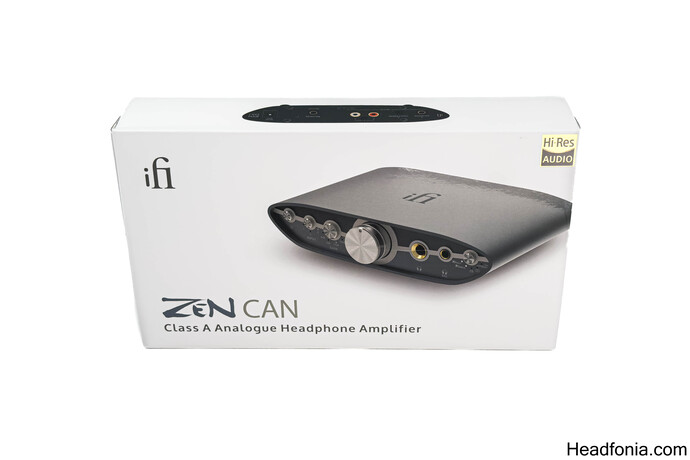
Packaging & Accessories
The iFi Zen Can 3 comes in a similar package to the Zen Dac 3. It is elegantly packaged in iFi’s signature white box, reminiscent of Apple’s simple yet elegant design philosophy. Around the box, we see the product features, and on the back, we see detailed specifications and measurement data. Inside the box, the Zen Can 3 is securely housed in a pre-molded white cardboard layout, which I believe is made from some sort of recycled material to ensure the safety of the AMP during transit.
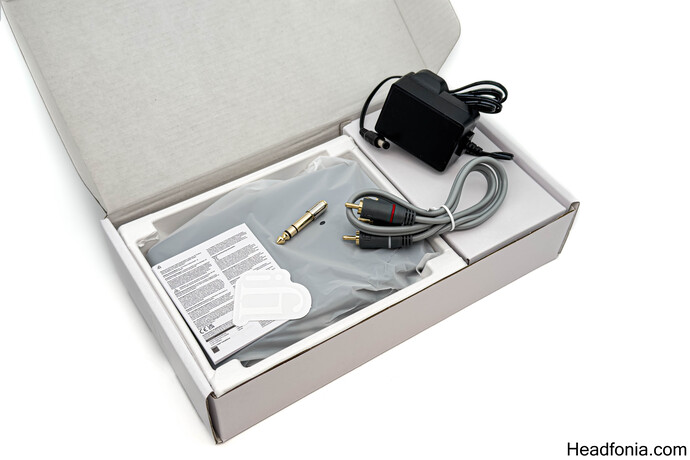
Next to the AMP, you’ll find a number of accessories in a separate white box. There’s a DC5V power supply with a barrel connector, a high-quality 6.35mm to 3.5mm gold-plated adapter, and short, iFi-branded RCA interconnect cables. Many headphone amp manufacturers don’t include RCA cables in the box, so kudos to iFi on this feat. There’s also a quick start guide, an iFi sticker, and a mini booklet with ambiguously small print that my eyes can’t read. In short, everything you need is included except the 4.4mm – 4.4mm cable for balanced use.
Design & Build Quality
iFi products have always been excellent when it comes to build quality. Just like the ZEN DAC 3, the ZEN CAN 3 is compact with its 158 x 117 x 35 mm dimensions and 500 grams weight. The chassis is identical to the ZEN DAC 3, making CAN 3 the perfect companion to stack them up.
Zen Can 3’s solid build features a bluish gunmetal finish accented with bronze and leather-looking elements, creating a premium aesthetic. It looks modern, chic, and professional at the same time.
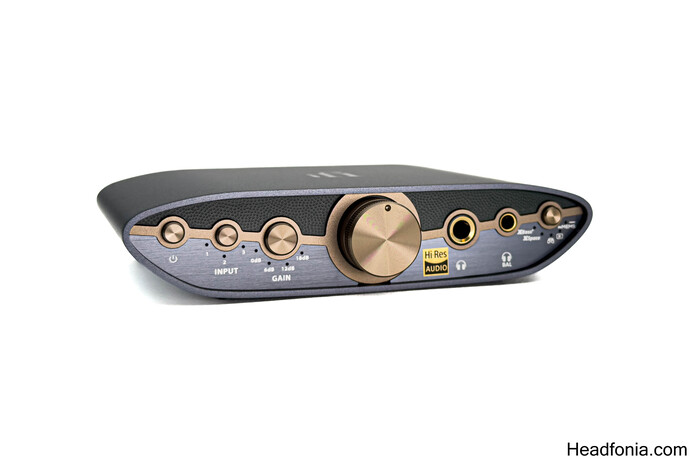
The front panel is designed with functionality in mind, with a smooth-turning, machined metal volume knob in the center, accompanied by power, input, and gain buttons on the left, and 6.35mm and 4.4mm headphone outputs and mode select buttons on the far right. The rear panel features an RCA input, a 3.5mm unbalanced input, and a 4.4mm balanced input, as well as a 4.4mm balanced output. The device uses a 5V barrel connector for power.
The 4.4mm Pentaconn input/output can be somewhat limiting, however, as these IC cables are less common and can be costly. iFi charges between fifty to hundred dollars for its own 4.4 cable lineup. Similar to Topping’s use of TRS connectors, this could be a potential inconvenience for the user.
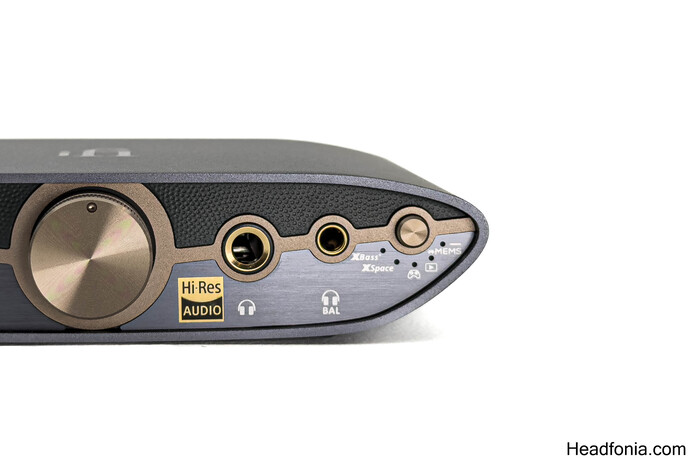
iFi also offers an optional iPower2 adapter for improved noise performance at an additional cost, but in my opinion, spending an extra $70 on a power adapter makes it hard for me to praise the unit’s price/performance ratio. I don’t have that adapter, so my review is written using the included power adapter.
The iFi Zen Can 3’s exceptional build quality illustrates iFi’s aluminum mastery. This is what over a decade of experience in precision engineering looks like. The buttons have great tactile feedback, and the I/O sockets and connectors feel solid. One small thing I noticed is that the volume control is slightly lighter (easier to turn) than the volume control on my Zen DAC 3. I felt the need to be extra careful around the volume knob while using an easy-to-drive IEM like the 64-Audio Volur.
The article continues with the part on sound on the next page. Click here or use the buttons below.
Page 1: iFi, ZEN CAN 3, Packaging & Accessories, Design & Build Quality,
Page 2: Features & Modes, Sound Impressions, Comparison, Last Words







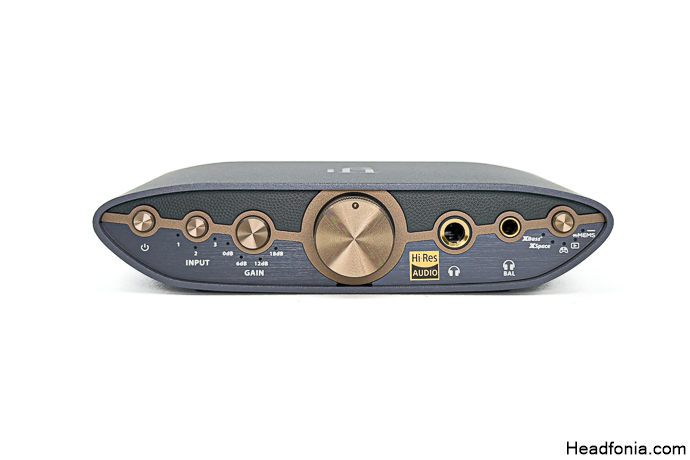
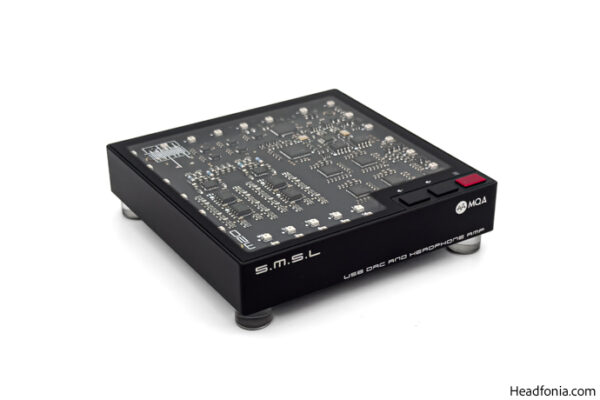

Lionel
Hello Yagiz,
Thank you for this detailed review. It’s always a pleasure to read your adventures.
Something got me thinking and please bear in mind that this hobby is kinda new to me : am i wrong to say that dongle dac are underpowered versions of desktop dacs ?
I guess what i’m trying to ask by saying hat is this : if power doesn’t matter, can we say that if the tuning, the sound signature is what matters, we don’t need desktop dacs ?
I can’t help myself to compare in my mind some dongle to some desktop dacs for example :
– the onix to this zen can
– the ibasso dc07 to a highly resolving Topping, pretty much any of them.
If power doesn’t matter, do i need to buy a zen can if warmth is what i’m after ?
Do i need to buy a topping desktop dac if technical capabilities is what i’m after when i have the dc07 ?
I love this kind of conversation.
looking forward to your response,
Thank you.
Yagiz
Hey Lionel,
I hope you are well! Thanks for the kind words.
Think of dongle DAC/AMPs as miniaturized versions of desktop DACs (or DAC& combos). Desktop units have distinct advantages over dongles, mainly because the physical space allows engineers to design more complex audio circuitry with better filtering, advanced power supplies, and higher quality DAC implementations (like R2R or FPGA designs) etc. This generally translates into “better” sound, though how much better depends on how sensitive your ears are to those nuances. It’s really a trade-off between convenience and performance, so I’d always recommend trying out different setups if you can.
If you don’t have a local audiophile shop, start small and explore/purchase different budget equipment to discover your preferred sound signature without jumping right into the mid or high end. Drivability is a separate topic, but unless you’re using an extremely power-hungry headphone, most gear released in 2024 will easily handle typical loads. Modern dongles are already pushing 300mW+ at 32 ohms, so raw power is less of a concern. However, more power doesn’t necessarily mean better sound.
If you’re after warmth and considering the iFi stack, I’d recommend the ZEN DAC 3 without the CAN 3, which as a standalone DAC AMP, offers a warm & smooth sound signature. Also, keep in mind the law of diminishing returns: after a certain point, the improvements in sound quality become smaller and less noticeable. This is why starting small and exploring different gear to find your preferred sound signature is often the best approach, especially in the beginning.
Hope this helps!
Lionel
Hello,
Thank you for your response, it makes complete sense.
Would you advise on proceeding in the same way with iem/headphones ? Going up in price until you find your “niche”.
I listen to a lot of gansta rap/boom map 90s New York rap where lows and mids and king if this type of music.
Treble are important for my gaming sessions though.
I currently have a Hifiman He-4xx, a Senn Hd660s with a weird 2n hand stack combo comprised of a schiit magni3+ and a Mayflower arc dac.
I later bought the moondrop 50$ dac and a ka1.
I’d say the Fiio tuning fits my music tastes quite nice and would also say that depending on what i listen to, those dongles dacs are better than my weird stack.
Initally thought about getting a Smsl Do400 for my entrey to mid-tier dac/amp but after your comment, i realise i maybe need to spend some more time with low budget dac before fully appreciating the benefits of the mid tier.
Have a good day Yagiz.